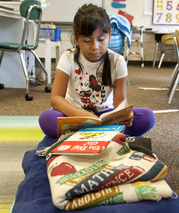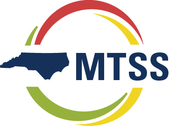
Revised English
Language Arts Standards Up for Action in April
State Board of Education members reviewed the third draft of
revisions to the English Language Arts
Standards in March in preparation for a vote in April. The revised
standards will govern what students are expected to learn and be able to do in
English language arts in each grade, K-12.
North Carolina reviews content standards for every subject
taught in North Carolina schools on a regular basis. The latest revisions were
made after gathering feedback from local school districts, from the Academic
Standards Review Commission and from the public. The Data Review Committee and
Writing Team were comprised of local English language arts teachers and others.
These groups have been providing feedback and working on revisions since June
2016.
Revisions include a new format for the standards to provide
more clarity to the standards, including glossary entries for terms. This
change is designed to diminish confusion about what a standard means and to
help English teachers statewide to have a common vocabulary. Other revisions
expanded the description of the complete writing process, put more focus in
some grades on grammar and usage conventions, identified new handwriting
standards in grade 2 to focus on cursive writing, and focused more on reading
persistence and the ability to connect prior knowledge and experiences to
informational (non-fiction) text.
Overall, 125 standards had a major change as
described above, 45 had a minor change and 179 standards remained the same.
Eight standards were removed, and one new standard was added. Sixty-seven
standards had the examples removed with no other change
|
Standards Versus
Curriculum – What’s the Difference?
Sometimes the terms standards and curriculum are used
interchangeably, but English language arts staff working on the revised
standards in that subject noted the distinction between standards and
curriculum.
Standards are what students are expected to know and be able
to do – the end result. Curriculum references the delivery system used to help
students meet the standards. Curriculum could include student activities, books
and digital resources, programs focused on particular subjects and the like.

Charter Applications
to Receive Potential Second Review Under Process Changes
The State Board of Education approves charter school
applications each year, and the NC Charter Schools Advisory Board (CSAB) has
recommended adjustments to the current process.
A change in the procedure would
provide for a further CSAB review of any charter that the Board initially votes
to deny. A denial could occur on a State Board of Education’s second reading.
All approvals or denials of charters would be completed by June or August (for
those receiving a second CSAB review).
|
Mental Health Policy
Discussion Continues
Board members continued to discuss school-based mental
health policy recommendations brought to it by the North Carolina School Mental
Health Initiative, a multi-disciplinary interagency partnership with broad
representation from public educators, community-based mental health clinicians,
lawyers, advocates, university faculty and parents.
The recommendations include creating a sustainable continuum
of supports and services for student mental health and substance use that
engages all stakeholders. Some potential implementation tactics include
professional learning opportunities that promote awareness, prevention and
early intervention; local policies that support a continuum of integrated
services; and enhanced state and local capacity to prevent mental health
issues, provide early intervention, and effectively refer, treat and transition
students back to school through integrated service delivery models. Members
continue to discuss this recommendation and options for implementing mental
health support in school districts.
The NC School Mental Health Initiative’s report noted that
mental and behavioral wellness is directly linked to overall positive student
achievement, school climate, high school graduation rates and the prevention of
risky behaviors, disciplinary incidents and substance abuse. Youth suicides are
up in North Carolina from 23 in 2010 to 46 in 2014, and 19 percent of students
have some type of mental health disorder annually.
 Multi-Tiered System of Support
Nearly all of
North Carolina’s 115 school districts and 50 charter schools have implemented
the state’s Multi-Tiered System of Support (MTSS), a multi-tiered framework that
promotes school improvement through engaging, research-based academic and
behavioral practices.
MTSS uses
data-driven problem solving to maximize growth for all students. It is an
approach to the early identification and support of students with learning and
behavior needs. MTSS is both a rapid-response system to address student
concerns, as well a way to examine the academic and behavioral practices for
all students. MTSS includes ensuring all students receive quality instruction
in all classrooms. The framework involves parents regarding student
interventions and progress.
N.B. Mills
Elementary School (Iredell-Statesville Schools) Principal Kim Mitchell presented to the
Board regarding her school’s experience in implementing the MTSS approach. She
characterized the implementation as moving from being a “hamster on a wheel” to
getting in front of discipline and making significant changes to allow the
school staff to move away from always being in a reactive mode.
Mitchell said a key concept
in implementation success is to approach it as a layered system with a differentiated
core base, supplemental support for those who need it and intensive support for
students who need that extra level of support. She noted the following key
steps to implementation success:
* Divide responsibilities among leadership. Create
“owners” of specific steps.
* Ensure program fidelity.
* Incorporate staff training.
* Hold weekly conversations in leadership, data
analysis and next steps.
* Note trends.
* Create a systematic framework.
* Balance both academic and behavioral
components as equally important.
|
|